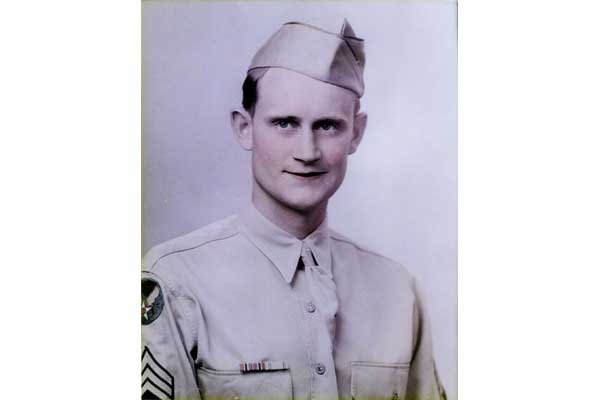We lose 1,100 World War II veterans each day.
Journalist Tim Russert says,
”
We stand on their shoulders. They shaped our destiny.
”
We lose 1,100 World War II veterans each day.
Journalist Tim Russert says, “We stand on their shoulders. They shaped our destiny.”
Eventually there won’t be anyone left who remembers actually fighting in the greatest war of the last century. No one will remain who can give an eyewitness account. It is important that we record as many of their stories as we can before it’s too late.
Yet, those who served in WWII are the humblest of soldiers and the least likely to tell their stories. Take Gilroy’s Mitch Avery, for example.
Those of you who knew him as the affable local musician who liked to crack jokes would never suspect that he had once been stationed in the Panama Canal Zone and had served with a bomber command unit that had seen active duty in the western Pacific.
Before he died, Avery quietly and modestly told a brief version of his story for the first time, not to toot his own horn, but because he had been asked by WWII historians to record it for posterity. He decided to write down the bare essentials and called me to go over it with him.
Avery enlisted in the Air Corps in September 1940 and attended an aircraft mechanics training school at Chanute Army Air Field in Illinois. Following completion of his training, he was assigned to an air base near Panama City named Albrook, where he joined the Sixth Bomber Command in July 1941.
“As soon as the Pearl Harbor Attack occurred, our duty activities changed drastically,” Avery said. “We began 24 hour per day bomber patrol designed to provide constant protection of the entrance to the canal from the Pacific Ocean. The canal had become a critically strategic target as the most direct and shortest water route from ocean to ocean.”
Avery and his unit maintained surveillance in order to locate any ships carrying personnel or aircraft which could pose a threat to the canal, the three sets of locks, or any military base located in the canal zone.
“My outfit, the Sixth Bomber Command protected those targets very effectively,” Avery said. “The types of planes we used included B-17s, B-24s, LB-30s, and an occasional amphibious PBY flying boat that was used for performing sea rescues. My duty as an aircraft mechanic meant I had to keep our planes constantly ready to fly their missions at a moment’s notice. While on patrol flights, they reported all sightings with a secret message relayed to the command center by radio while they awaited orders to attack if necessary.”
Although he had enlisted for three years, Avery was held over for the duration of the war. He was transferred to B-17 flight training where crews were readied for combat duty in Europe. In early 1945, he moved to a B-29 base in Kansas where he prepared for duty in the Pacific. He was on the Island of Iwo Jima on special assignment when the atomic bombs were dropped on Hiroshima and Nagasaki, essentially ending the war. Upon Japan’s surrender, he was finally discharged.
He was one of the few soldiers on duty for the entire length of U.S. involvement in WWII.
After the war, Avery went home to raise four children with his wife Vivian, whom he was married to for 27 years. He was called up again to serve in Korea, and afterwards worked as a civilian mechanic. He was also involved in work on futuristic aircraft, including the development of tiles for the Space Shuttle.
After Avery’s wife died of Lou Gehrig’s Disease in July 1987, he lived a full life as a widower for 22 years. Key to his happiness was the Gilroy Senior Center and the friends he made there. He also loved traveling around in his RV, visiting his grandchildren and playing trumpet in ensembles throughout the Gilroy community. He could be seen every night having dinner at his favorite Gilroy restaurant, Jeffrey’s, where everyone knew his name. He kept young by staying so actively involved in the community and going out dancing to the big band music of his youth with girlfriend Doris Garriga.
In 2004, former Staff Sgt. Hugh Mitchell Avery attended the final reunion of his old bomber outfit. Too many of them had passed away to warrant holding anymore reunions.
On March 21, Sgt. Avery rejoined his old friends in the sky, always to be remembered as the “Greatest Generation.”
“Not only are they commemorated by columns and inscriptions, but there dwells also an unwritten memorial of them, graven not on stone but in the hearts of men.” -Pericles (c. 495-429)
You are invited to attend a tribute to Mitch Avery’s life at 2 p.m. April 11 at 7600 Church St. in Gilroy. Details: 842-4021.













